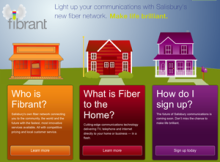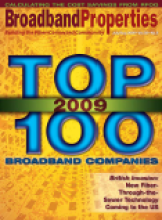Wisconsin Superintendent: No Really, Broadband is Essential for Education
Tony Evers, the Wisconsin State Superintendent, has voiced concerns about a provision in Wisconsin' budget bill that we discussed yesterday. It would force Wisconsin to return tens of millions in broadband stimulus awards intended to connect schools and libraries in a few communities while also raising prices for most local governments, libraries, and schools around the country by killing the coop that connects the communities. Evers wrote the following letter on June 7 in response.
I am extremely concerned and alarmed by the telecommunications provisions which passed the Joint Finance Committee Friday night and their impact on Wisconsin’s public libraries, public and private schools, the university system, technical colleges, and WiscNet. These provisions will have a devastating impact on the University of Wisconsin System campuses and our schools and public libraries. This language was introduced very late in the legislative process and there was no time for any public review, comments or feedback from those impacted by these provisions.
From the UW perspective, this will require it to return the $39 million in broadband grants to the federal government. In addition, it will prohibit any UW campus from participating in advanced research networks linking research institutions worldwide. You cannot have a renowned research institution, like the UW-Madison, without having access to such networks.
From the public and private school and library perspective, seventy-five percent of our public schools and ninety-five percent of our public libraries get Internet access via WiscNet - a not-for-profit network service under the auspices of the UW-Madison. The provision in this legislation will very likely make it impossible for WiscNet to continue offering Internet access. If our schools and libraries must use other Internet providers most will pay at least 2-3 times more than what WiscNet now charges. Furthermore, other Internet providers base their charges on how much bandwidth a school or library has - the higher the bandwidth, the higher the Internet costs. WiscNet’s funding formula is not based on bandwidth. Thus as schools and libraries continue to increase their bandwidth, their WiscNet costs remain the same. With our schools and libraries facing substantial budget reductions, how can anyone justify making them pay more for less service?





 The question is why they want faster connections. Only 20% say their current connection completely meets their need to conduct online testing and assessment applications - with another 44% saying it "mostly" meets those needs.
The question is why they want faster connections. Only 20% say their current connection completely meets their need to conduct online testing and assessment applications - with another 44% saying it "mostly" meets those needs.
 These gaps represent a tremendous opportunity for growth - communities should be building their own fiber-optic connections to connect these key institutions and ensure they will have affordable, fast, and reliable connections well into the future. By owning the network, these institutions will have greater control over future costs and their capacity to take advantage of even newer applications.
The FCC should favor locally owned networks to encourage self-reliance instead of never-ending subsidies to private carriers who have little incentive to lower prices and increase investment.
These gaps represent a tremendous opportunity for growth - communities should be building their own fiber-optic connections to connect these key institutions and ensure they will have affordable, fast, and reliable connections well into the future. By owning the network, these institutions will have greater control over future costs and their capacity to take advantage of even newer applications.
The FCC should favor locally owned networks to encourage self-reliance instead of never-ending subsidies to private carriers who have little incentive to lower prices and increase investment.



